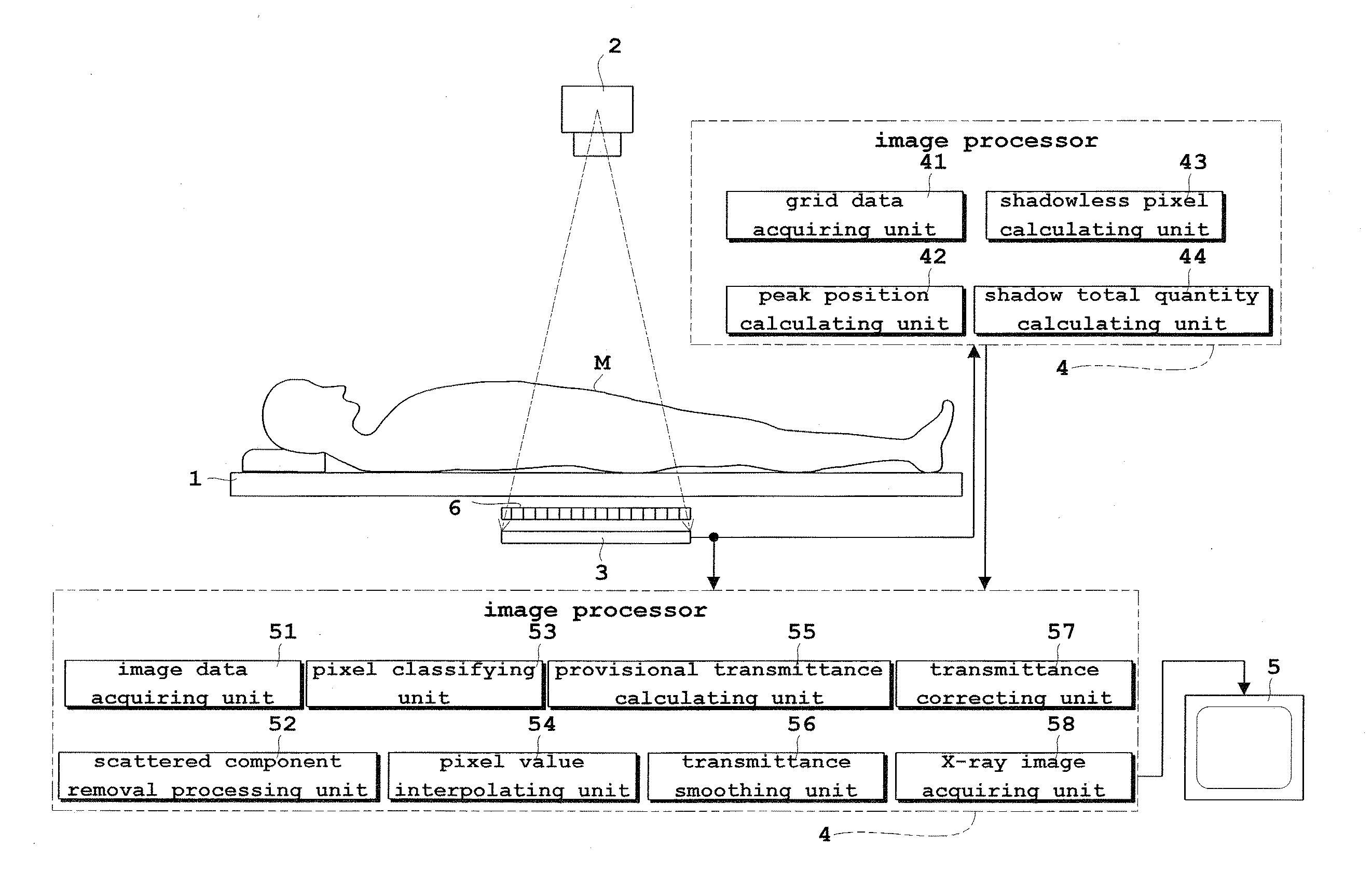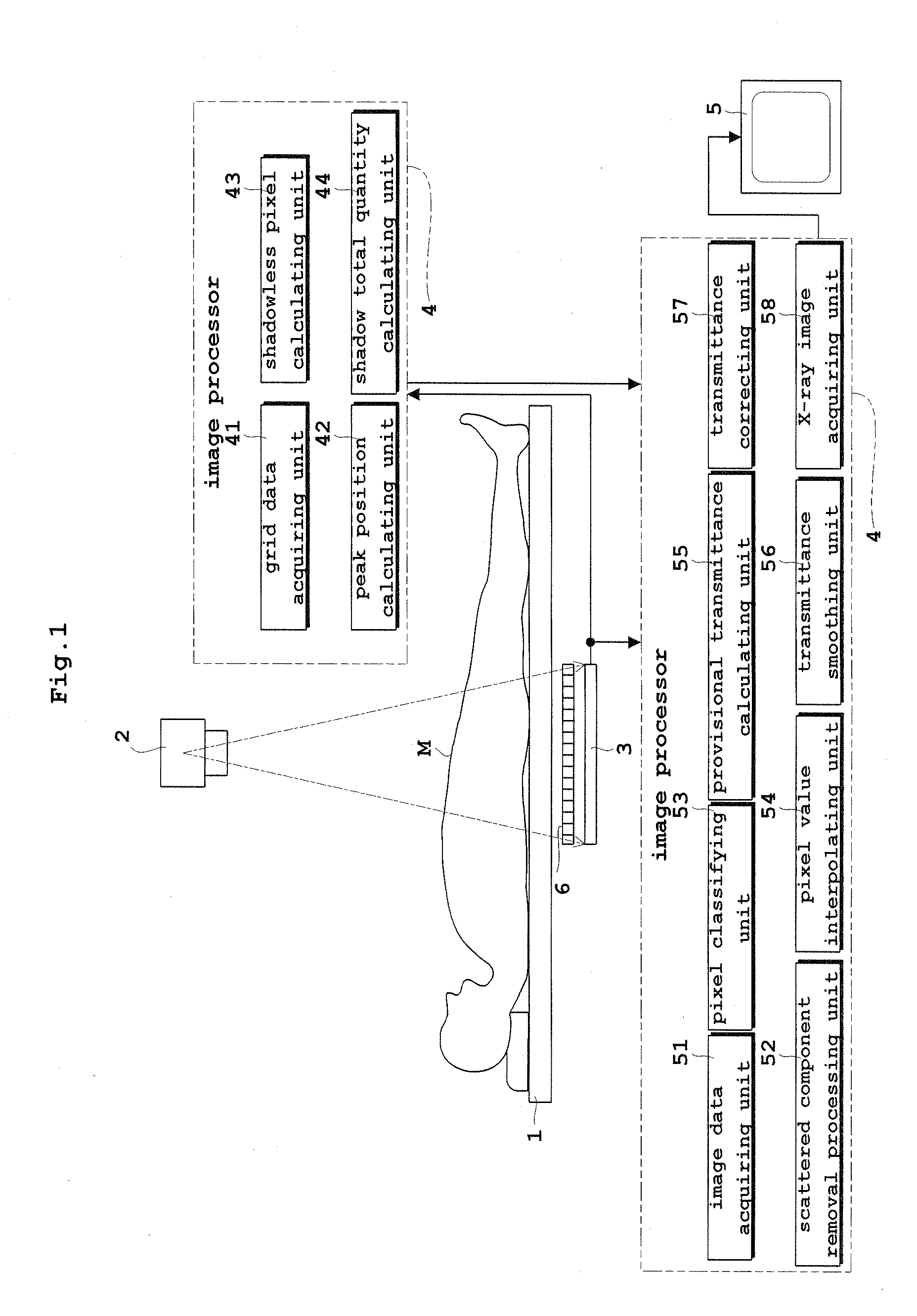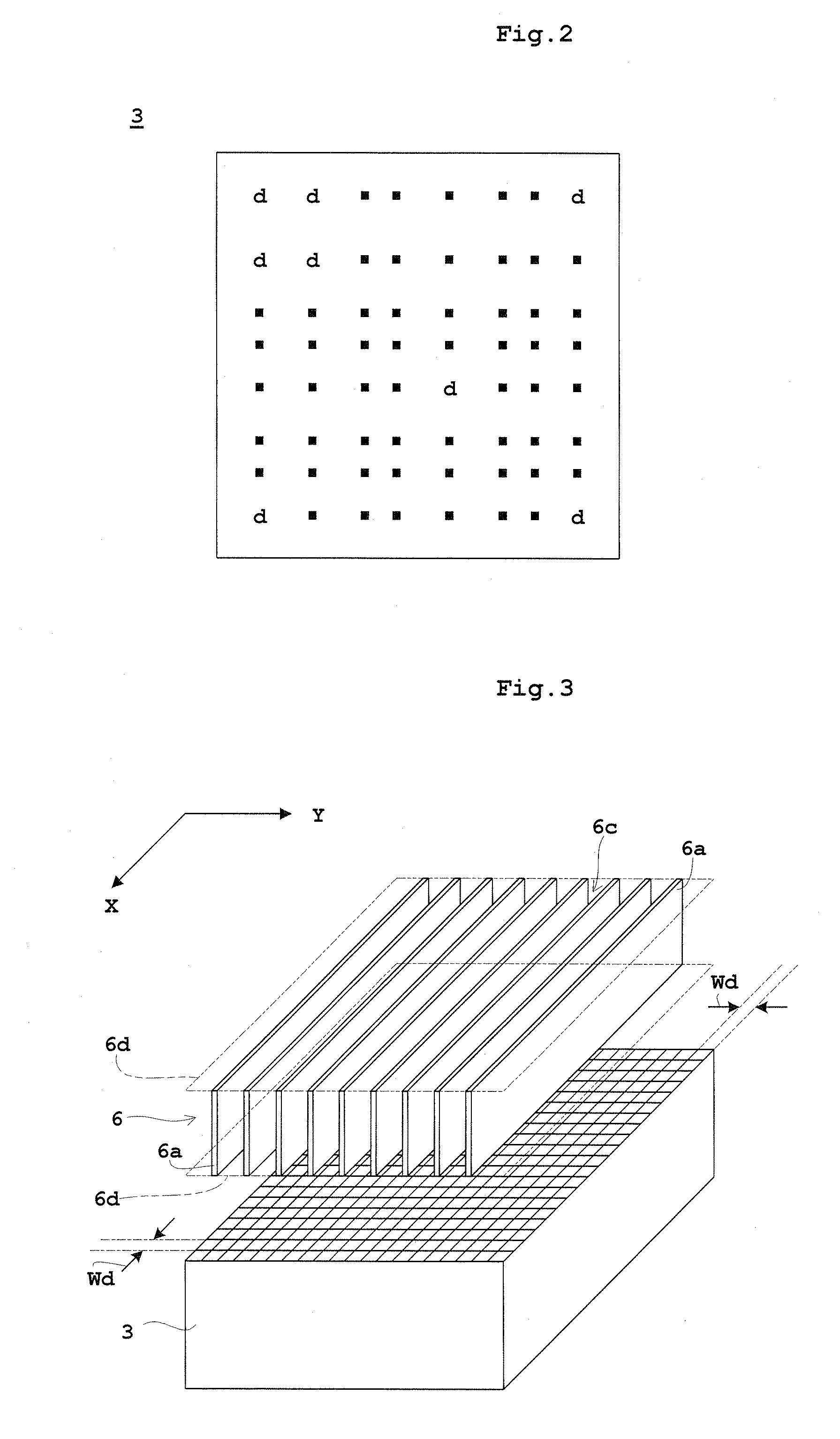Radiographic apparatus
- Summary
- Abstract
- Description
- Claims
- Application Information
AI Technical Summary
Benefits of technology
Problems solved by technology
Method used
Image
Examples
Embodiment Construction
A preferred embodiment of this invention will be described in detail hereinafter with reference to the drawings.
FIG. 1 is a block diagram of an X-ray imaging apparatus according to this invention. FIG. 2 is a schematic view of a detecting plane of a flat panel X-ray detector (FPD). FIG. 3 is a schematic view of an air X-ray grid according to this invention. FIG. 4A is a perspective view showing an outline of the air grid and FPD together with an X-ray tube. FIG. 4B is an enlarged view of peripheries of the air grid. FIG. 4C is a sectional view seen from arrow A of FIG. 4B. This embodiment will be described taking X-rays as an example of radiation.
As shown in FIG. 1, the X-ray imaging apparatus according to this invention includes a top board 1 for supporting a subject M, an X-ray tube 2 for emitting X-rays toward the subject M, a flat panel X-ray detector (hereinafter abbreviated as “FPD”) 3 for detecting the X-rays emitted from the X-ray tube 2 and transmitted through the subject M...
PUM
 Login to View More
Login to View More Abstract
Description
Claims
Application Information
 Login to View More
Login to View More - R&D
- Intellectual Property
- Life Sciences
- Materials
- Tech Scout
- Unparalleled Data Quality
- Higher Quality Content
- 60% Fewer Hallucinations
Browse by: Latest US Patents, China's latest patents, Technical Efficacy Thesaurus, Application Domain, Technology Topic, Popular Technical Reports.
© 2025 PatSnap. All rights reserved.Legal|Privacy policy|Modern Slavery Act Transparency Statement|Sitemap|About US| Contact US: help@patsnap.com



